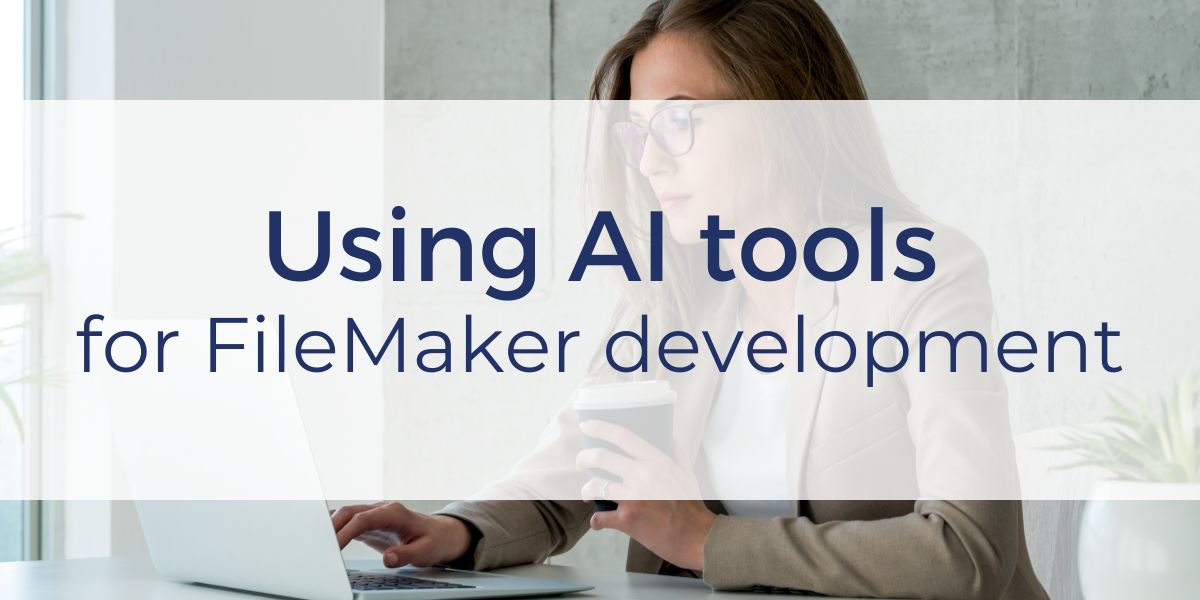Planning your FileMaker Dashboard

When you are looking to create a FileMaker dashboard, there are important questions to consider. Our full Productive Computing University course, Claris FileMaker Pro Advanced 2, shows you how to build key components of a dashboard.
Why do you need a dashboard – why is it helpful?
- A dashboard in FileMaker brings your most crucial data to the forefront, helping you make informed decisions quickly.
- Access all your essential metrics in one place—no more navigating through multiple reports! Learn how dashboards can streamline your workflow.
- Every business is unique, and so should your data presentation. Customize your FileMaker dashboard to reflect what matters most to your team.
- FileMaker dashboards offer live data insights, enabling swift and effective decision-making.
- Empower your team by making complex data easily understandable. A well-designed FileMaker dashboard not only displays data but tells the story behind the numbers.
Dashboards can vary greatly from one project to another and the user requirements will vary. Before you start building your FileMaker dashboard, there are important details to consider.
In this post and video, you’ll learn the key questions to ask and how to employ a systematic approach based on user feedback and specific objectives.
Understanding Requirements
- What are the primary objectives of the dashboard? Understanding the main goals helps tailor the dashboard to meet the specific needs of the users or the organization.
- Who are the primary users? Knowing the audience helps determine how complex or simple the dashboard should be.
- What key metrics and data points are most important? Identifying the most relevant data ensures the dashboard is focused and effective.
- How do you plan to use the dashboard? Considerations include the device type (desktop, mobile, etc.), the context of use (end-of-the-month financial decisions, daily sales tracking, etc.), and the environment (office, remote, etc.).
Design and Functionality
- Do you prefer a static or interactive FileMaker dashboard? Understanding this preference shapes whether the dashboard will simply display data or allow user interactions.
- What types of visualizations are most useful? Deciding between charts, graphs, lists, etc., based on what best conveys the necessary information.
- How frequently should the data be updated? This could range from real-time updates to daily, weekly, or monthly refreshes.
- Are specific filters or drill-down capabilities needed? This influences how users interact with the dashboard to find the information they need.
Technical Considerations
- What data sources will the dashboard pull from? Identifying these sources helps integrate the FileMaker dashboard seamlessly with existing data systems, whether they are internal or involve external APIs.
- Are there any performance considerations? Consider factors like load times and real-time data processing capabilities as well as where the dashboard is viewed from. Seeing it in your office with a good Internet connection vs. via a phone from a remote location could make a difference.
- What security measures need to be in place? Security is crucial, particularly for dashboards handling sensitive business information.
- What is the budget and timeline for the dashboard project? Clear budgeting and scheduling help in planning and executing the dashboard project within organizational constraints.
User Experience
- Do you have any specific branding or design guidelines to follow? Ensuring the FileMaker dashboard matches corporate branding or specific design preferences is vital for consistency.
- What level of training or support will users need? Assessing the dashboard’s complexity helps determine necessary training and ongoing support to ensure effective user engagement.
- How will feedback be gathered and incorporated? Implement mechanisms for collecting user feedback, such as integrated feedback forms or periodic surveys. Establish a process for reviewing and acting on feedback to continually improve the dashboard’s functionality and user experience.
These questions are fundamental in guiding the development of effective and functional dashboards tailored to specific business needs and user requirements.
Other products and services Productive Computing, Inc. offers:
- What can PCI do for you? – Overview Video of Productive Computing Services
- Consulting and Development – services billed by the hour
- Maintenance and Support – services billed monthly
- Packaged Services – flat fee for Health Assessment, Server Installation, etc.
- Plug-ins – tools to integrate with QuickBooks, Outlook, Google, etc.
- Core CRM Pro – customizable and scalable CRM built on FileMaker
- Claris and FileMaker Licensing – discounts on new seats and renewals
- FileMaker and QuickBooks Hosting – options to host your files in the cloud
- Productive Computing University – free and paid online video training courses for beginner to advanced users and developers
The post Planning your FileMaker Dashboard appeared first on Productive Computing, Inc..




Recommended Comments